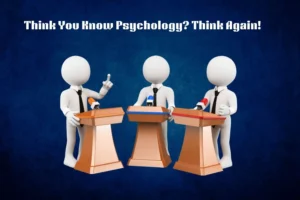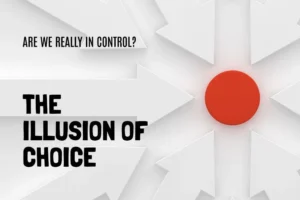Take a journey of the amazing life of the famous psychologist Anne Treisman, who created the foundation for the science of perception and attention.
In this article, we will zoom in on the episodes of Treisman’s life that led her from a humble beginning to an academic achievement. You’ll be taken through the phases of her education and career life if you check the highlights that helped her become one of the best psychologists.
She started with her first Attenuation Model and finally laid the foundation of Feature Integration Theory, which had a profound effect on psychology.
By the end, you will carry along some great lessons about the importance of Treisman’s research and the impact it continues to make. Make sure your seat belts are fastened and get ready to be entertained and to learn some interesting facts about one of the greatest psychologists of our time, Anne Treisman.
Table of Contents
Anne Treisman’s Biography
Anne Treisman’s Life Story
Early Life
Treisman was born in 1935 and her childhood was characterized by the desire to find out how the mind works. In her younger years, she showed a special gift for grasping how people interpret and process data, which primed her for future work in psychology.
Education
She doggedly followed her educational pursuit which she earned bachelor’s degrees from prestige institutions such as Cambridge and Harvard. Her psychology education and research methodology laid down a strong foundation for her in the days to come of her career.
Career Journey as a Psychologist
In this capacity, Treisman applied her superior intellect to rise to the ranks of a renowned psychologist. She started to investigate that in the end altered cognitive psychology. The main theme of Treisman’s studies was untangling the secrets of attention and perception, investigating the way consciousness processes sensed information.
Notable Achievements and Awards
During her profession, Treisman got several awards and recognition for her major research discoveries in psychology. Her work including her Feature Integration Theory seemed to get this great acceptance among the academic community and the general public.
She was granted the National Medal of Science in 2013 by President Barack Obama. She was also a member of the National Academy of Sciences and received the Grawemeyer Award in Psychology.
What Is Anne Treisman Famous For?
Treisman is known for her outstanding work in the areas of attention and perception. Her best-known work is the Feature Integration Theory, which postulates the mechanisms that underlie seeing and interpreting visual information.
According to this theory, our knowledge of cognitive processes has been revolutionized, with research in neuroscience and computer science being among the areas that have benefited greatly from it.
Anne Treisman’s Obituary
Treisman, a trailblazer and matriarch of psychology, died in 2018, and she left us with her innovative theory and many discoveries. The effects of her works in the field of cognitive psychology cannot be underestimated.
Anne Treisman Attenuation Model

Key Components of Anne Treisman’s Attenuation Model
Below are the key components of Anne Treisman’s Attenuation Model:
Threshold
She asserts a relationship between attended and unattended stimuli with different thresholds for processing. Processing of attended stimuli results in the demand for the minimum of attention. In contrast, unattended ones require a more high threshold for stimulus processing to be made.
Early Selection
Firstly, the processing of all inputs is done at a basic level. Only stimuli that surpass a certain threshold move to further processing stages. This level is the product of attributes like origin and purpose, which stand for the importance of the stimuli.
Attenuator
Treisman came up with the idea of an attenuator that acts like a volume control knob. It adapts the strength of incoming signals to their respective importance. This allows selective attention to be concentrated on the relevant information, with less of the insignificant details being processed.
Late Selection
In Treisman‘s model, the unattended stimuli would have their meanings not being completely analyzed. The relevancy of the information still participating in the processing at the latter stage may demonstrate the attended process to be dynamic and continuous.
Applications and Implications of Anne Treisman’s Attenuation Model
Anne Treisman’s Attenuation Model has major implications for a variety of fields which are discussed below in the table:
| Selective Attention | This model shows the process of how different stimuli are given preference by a person in a complex background. Grasping that mechanism is crucial in some areas such as in applied psychology, neuroscience, and human-computer interaction. |
| Cognitive Load | The model makes it easy to understand the cognitive load and resource allocation because it explains how attention runs. This information is useful for developing works and interfaces that help to allocate attentional resources. |
| Clinical Psychology | The model is utilized in clinical environments for investigating disorders like attention deficit hyperactivity disorder (ADHD) and schizophrenia. The model’s findings serve as the basis for therapies that aim at enhancing attentional control. |
| Information Processing | Through the model, Treisman adds to the knowledge of information processing in the brain, elucidating the mechanisms relevant to perception, memory, and decision-making. |
Anne Treisman’s Feature Integration Theory
The feature integration theory of Anne Treisman gave us a new insight into visual perception and this is how we process complex stimuli. Her emerged late-20th century theory explains mechanisms that link visual elements and thus brain forms coherent perceptions of objects and scenes.
Key Components
Treisman’s theory posits two crucial stages: attention is separated in the preattentive stage and the focused attention stage. In the pre-attentive stage, features are processed separately while in the focused attention stage, these features are combined to make a correct perception.
How do Treisman’s Preattentive Stage and Focused Attention Stage Differ?
Here’s a table that highlights five important differences between Treisman’s Preattentive and Focused Attention stages:
| Aspect | Preattentive Stage | Focused Attention Stage |
| Processing Mechanism | Automatic and parallel processing | Controlled and serial processing |
| Awareness | Unconscious and involuntary | Conscious and voluntary |
| Capacity | High capacity, processing multiple stimuli simultaneously | Limited capacity, processing one stimulus at a time |
| Attentional Resources | Requires minimal attentional resources | Requires significant attentional resources |
| Feature Detection | Detects basic features (e.g., color, shape) attentively | Selectively attends to specific features based on task demands |
What Is The Difference Between Feature Search and Conjunction Search?
Here’s a comparative table that highlights the fundamental distinctions between feature search and conjunction search:
| Aspect | Feature Search | Conjunction Search |
| Target Definition | Defined by a single feature (e.g., color or shape) | Defined by a combination of features (e.g., color and shape) |
| Pop-Out Effect | Typically exhibits a pop-out effect | Lacks a pop-out effect |
| Search Efficiency | High efficiency; faster reaction times | Lower efficiency; slower reaction times |
| Parallel Processing | Often involves parallel processing | Usually requires serial processing |
| Guidance | Guidance by a single feature | Guidance by multiple features |
What Is an Example of a Feature Search?
Looking for a green circle among green boxes or a horizontal line among vertical lines demonstrates feature search, which means finding a target through one feature only.
What Is an Example of a Conjunction Search?
Finding a red triangle among red squares and blue triangles shows a conjunction search because it requires a combination of color and shape features to discover the target.
Is Feature Search Faster Than Conjunction Search?
Of course, feature search is likely to be quicker than conjunction search because it involves locating a single feature rather than integrating numerous features.
Feature search tasks frequently present a linear increase in reaction speed with the number of other stimuli, whereas conjunction search presents a more pronounced increase as a result of the need to process information coming from multiple sources.
What Is The Difference Between Conjunctive and Disjunctive Search?
Here’s a table that summarizes the key distinctions between conjunctive and disjunctive searches:
| Aspect | Conjunctive Search | Disjunctive Search |
| Objective | Find documents containing all specified terms | Find documents containing any specified terms |
| Strategy | Narrows down results by requiring all terms to be present | Broadens search scope by allowing any term to be present |
| Precision | Higher precision: Fewer results, but more relevant | Lower precision: More results, potentially less relevant |
| Example | “Cat AND Dog” | “Cat OR Dog” |
| Use Case | Useful for precise searches when specific information is needed | Useful for exploratory searches or when multiple options are acceptable |
What Is an Example of Feature-Integration Theory?
An example of feature-integration theory is the illusory combination of features from different objects that generate perceptual errors.
For example, in a rapid serial visual presentation task participants sometimes misperceive red triangle and blue square as one object which is the result of illusory conjunction of color and shape properties.
Applications and Implications of Feature Integration Theory
- Visual Search: FIT enables comprehending how the mind searches for features of objects such as color and shape, and why the single-featured target is easier than a combination of them.
- Attention and Errors: It talks about attention’s impact on perception and how we can sometimes make a mistake like seeing a red square when we’re looking at a red circle.
- Visual Illusions: FIT explains why we see visual illusions where our mind miscalculates the co-relationship between features, such as making out shapes from imagery that do not exist.
- Design Applications: It guides the designers to create a simple and meaningful visual interface and products by ensuring the users can get what they need without being confused.
- Clinical Insights: FIT relates to visual agnosia and ADHD, where feature integration disturbances influence object recognition and attention.
What Is The Difference Between Broadbent and Treisman?

Broadbent’s Filter Model and Treisman’s Attenuation Theory are both important theories in the field of attention and perception, although they differ in significant ways which are discussed in the table below:
| Aspect | Broadbent | Treisman |
| Filter Mechanism | A selective filter mechanism that blocks unattended sensory information based on physical traits like location or sound before it reaches awareness. | The more advanced mechanism such as unattended information that is not blocked but rather attenuated or reduced in power before arching to the conscious awareness. |
| Processing of Unattended Information | The meaning of the unattended information is not being processed. It involves filtering out features that are unrelated to meaning. | Untreated information is slightly processed semantically, though weakened. It can be still processed, for meaning, if it is relevant or salient. |
| Attentional Capacity | Capacity of the attention is limited, which calls for a stricter filter to avoid mental overload. | Limited attention span but gives the ability to process multiple stimuli simultaneously, aided by the attenuation mechanism which allows the attention span to be managed. |
| Selection Process | The information selection is based on solely the physical attributes like location or pitch and not the semantic content | Stimuli selection occurs with physical characteristics and semantic significance in mind so that the processing can be context-based and specific. |
| Role of Attention in Perception | Attention is a filter mechanism that is active at the early stage of perception and it selects information that people are aware of consciously. | Attention is a variable process that would strengthen signal strength, making it possible to focus on certain information and also to monitor for any changes in the surroundings or threats. |
What Did Treisman’s Attention Theory Add to Broadbent’s Theory of Attention?
Selective Attention Expansion
Treisman built on Broadbent’s selective attention model. Broadbent said that early attention filters information with physical attributes.
Treisman created the Attenuation Theory. This hypothesis suggested that instead of sifting out unattended information the mind attenuates it, reducing its strength but not eliminating it. This implied that some information could be processed on its own if it was relevant or particularly memorable.
Perceptual Integration Advancement
Treisman’s contribution indicated great progress in the area of perceptual integration. She worked on the Feature Integration Theory (FIT). This theory postulates two separate and parallel processing streams – one for color and shape features.
Then these parts come together to make a single consistent representation of objects. An attentive process is needed for this kind of integration. A moment of distraction would fail to chain the features together correctly, thus forming a phantom connection.
Early Selection Refinement
Treisman’s theory made the assumption of early selection in attention much more specific. While the model of Broadbent was an early filtering mechanism of strict type, Treisman’s model adopted a more flexible approach.
It appears that ignored information could nevertheless reach the higher levels of processing provided it had a low threshold of activation. This implied that content, which was highly relevant or memorable could be the bearer of attention, thus, explaining selective attention.
Anne Treisman Books
Here are five essential books and works including her substantial contributions:
| “Attention: Selection, Awareness, and Control” (1998) | Edited by Treisman, Jon Driver, and Richard Shiffrin. This book contains essays and studies on attention, including Treisman’s feature integration theory. |
| “Perceptual Grouping and Attention in Visual Perception” (1982) | Treisman and Garry Gelade collaborated. This key study presents the feature integration theory of attention. |
| “The Perception of Speech: From Sound to Meaning” (1992) | Treisman also contributed to the writing. This book looks at speech perception and the function of attention. |
| “Visual Attention” (1999) | Treisman and Michael Posner co-authored. This book discusses the processes of visual attention, focusing on Treisman’s studies. |
| “Oxford Companion to the Mind” (2004) | Edited by Richard L. Gregory, with additions by Treisman. This reference work provides Treisman’s thoughts on attention and perception. |
Anne Treisman Quotes
Here are some noteworthy quotes ascribed to her:

“The function of attention is to select certain parts of the input for further processing while ignoring others.”
“Our perception of objects is built up from the separate processing of their features. Attention is the glue that binds these features together.”
“Attention is the process by which the mind chooses from among the various stimuli that strike the senses at any given moment.”
“Understanding the mechanisms of attention helps us solve the complexities of the human mind and its interaction with the environment.”
Conclusion
Anne Treisman, a psychological pioneer, left a lasting legacy on her discipline through her innovative theories and research. Her magnificent academic adventure started with a modest childhood and a deep-rooted desire to comprehend the intricacies of the human mind. Treisman’s academic path led her to be a celebrated personality of psychology, with a great number of awards and distinctions bestowed upon her.
Known for her Attenuation Model, Treisman transformed our attitudes to attention due processes. One of the key findings of her detailed study of selective attention was the mechanisms behind the filtering and processing of information. Moreover, she introduced her Feature Integration Theory which changed the way visual perception is perceived by dividing it into preattentive and focusing attention stages.
Treisman’s work was not only of theoretical use but also practical in many diverse disciplines. Her theories continue to provide fodder for research in psychology, cognitive science, and other related areas. Looking back on Treisman’s life, we deeply acknowledge her irreplaceable contribution to figuring out the secrets behind our brains.
Pro Tip from Basics of Psychology
For students and researchers, scribbling through Treisman’s original manuscripts can give a deeper understanding of what she put forward in her theories.
FAQS
Who is Anne Treisman and why is she important in psychology?
Treisman was a well-known cognitive psychologist who is best known for her pioneering research on attention and perception. She is famed for her Feature Integration Theory which is based on the concept of how humans combine individual features of objects to form a whole. Her study has had a profound impact on our understanding of visual processing and attention mechanisms, thus making her a key person in cognitive psychology.
What is Anne Treisman’s Feature Integration Theory?
The feature integration theory suggested by Treisman explains that in the primary stages of processing, the brain separately perceives the characteristics of objects such as color, shape, and size. These aspects together form the whole construct of the perception. This theory assists us in understanding why and how we can attend to certain details of our world while we also can realize and understand complex scenes.
How did Anne Treisman contribute to the study of visual attention?
The contributions of Treisman to the field of visual attention are substantial. Her results proved how selective attention helps to put together different features and see coherent objects. She put forward the notion of the “binding problem” in the sense of how the brain integrates numerous features into one comprehensive perception. Her work served as a basis for much modern exploration in visual attention and perception.
What are some key experiments conducted by Anne Treisman?
A few main experiments performed by Treisman involved visual search tasks, in which the subjects were to locate a target among distractors. The results of her studies demonstrated that using a single feature (e.g. color) as the cue for the identification of a target was faster than using a conjunction of features (e.g. color and shape). Such experiments confirmed her Feature Integration Theory and showed the importance of attention in this process.
What awards and recognitions did Anne Treisman receive for her work?
Treisman was awarded honors and prizes throughout her career, indicating her importance to psychology. More importantly, she received the National Medal of Science from President Barack Obama in 2013. She was also a member of the National Academy of Sciences and won the Grawemeyer Award in Psychology. These awards confirm her impact and her role in the study of cognitive psychology.













